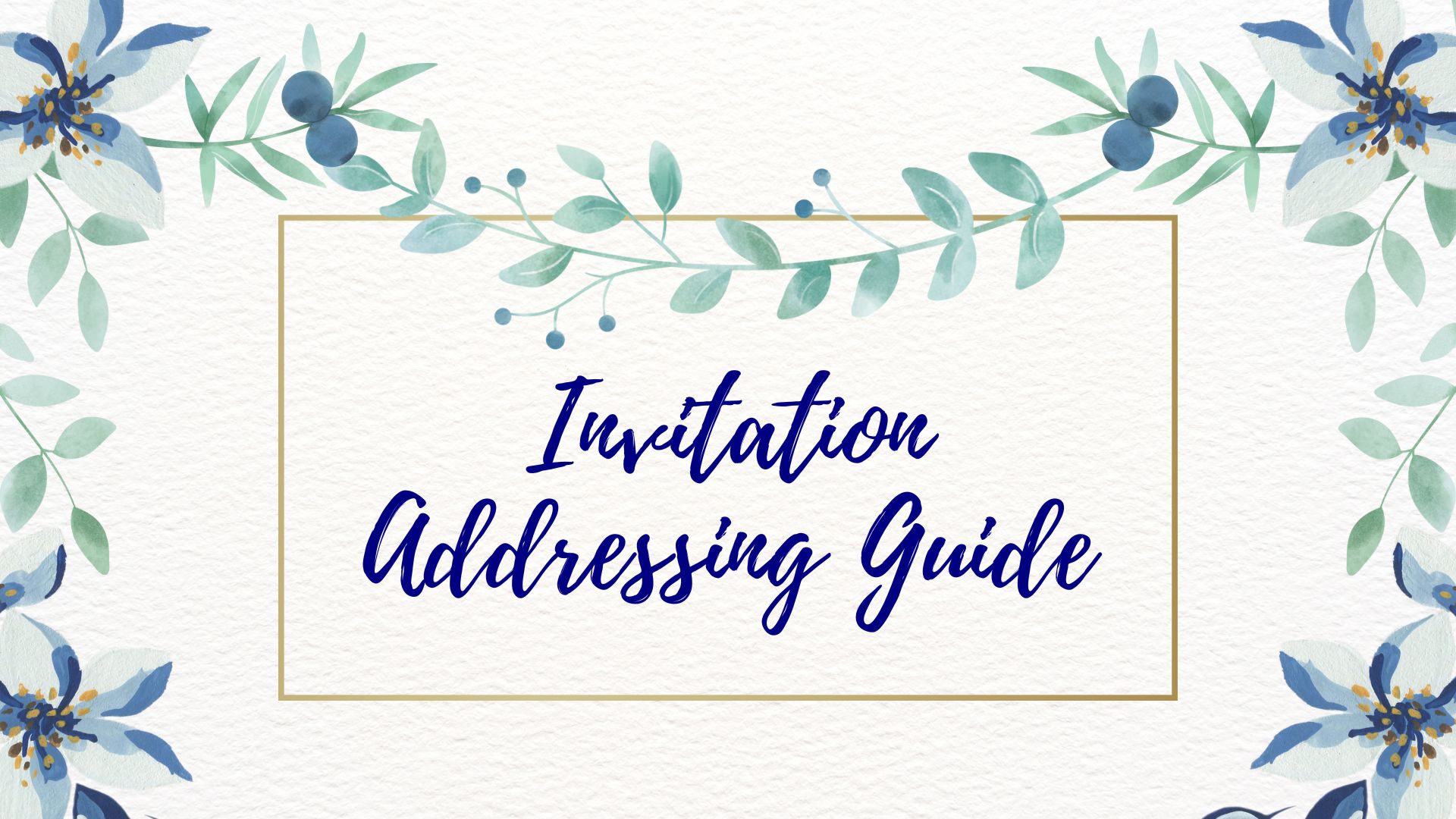You can feel stuck in a potential etiquette minefield when sending out invitations. The last step to sending the perfect invitations is addressing your cards correctly, Mrs., Ms., Dr., family, clients, pluralizing; there’s a lot to take note of. We have you covered!
Miss or Ms. or Mrs.? Miss is an unmarried woman or young girl under the age of 18. Mrs. is a married woman. Ms. can be used for any woman, no matter her marital status. If you’re unsure of the recipient’s marital status, use the titles “Ms. Jane Smith” or “Mr. John Smith.” In business, Ms. is usually the most appropriate.
Mr. or Master or Messrs? Master is the title for males under age 16. Mr. is the title for an adult man aged 16 or older (it is short for Mister or Monsieur in french). The abbreviated plural for Messieurs is Messrs. This is used to indicate multiple gentlemen such as brothers or two married men. You may want to ask male couples if they prefer to be Mr. and Mr. Smith or the Messrs. Smith.
Mx.? Mx. is the universal title that anyone can use. It is gender non-identifying. Even if you identify specifically with a gender, you can still use Mx. You may also see Mx. used when the sender is unaware of your title.
Married women keeping their maiden name, use her first name and maiden name and her spouse’s first and last name. Use Ms. in this case. For engaged women and those living with a spouse, use Ms. with the woman’s maiden name until married.
Use titles for associates and acquaintances. If you are sending invitations to a person that you’re not close with, use formal titles when addressing their envelope, such as “Mr. John Doe” or “Ms. Jane Doe”.
Titles for a married couple: Address a married couple traditionally as “Mr. and Mrs. John Doe” or try “Mr. and Mrs. John and Jane Doe” for a modern twist. For same-sex couples that have kept their last names after marriage, write both names on the same line, and separate them with the word “and.” You can give each name its correct title; for example: “Mr. John Doe and Mr. John Smith” or “Mrs. Jane Doe and Mrs. Mary Smith.” you can consider ordering the names alphabetically. Alternatively, you can use the plural form of the title when the married same-sex couple has the same last name. For men, you could write “Messrs. Jim and John Smith” instead of “Mr. Dan Smith and Mr. John Smith” (although both are correct). For women, you could write “The Mesdames Maria and Jane Doe” or “Mrs. Maria Doe and Mrs. Jane Doe.”
Titles for an unmarried couple that live together: Address an unmarried couple that lives together by joining their names with “and,” such as “Mr. John Smith and Ms. Jane Doe.” or write their names on two separate lines. For same-sex couples, address each person individually with the appropriate title. Write each name on a separate line or join with “and,” the same way you would address an invitation to an opposite-sex unmarried couple. The order of the names doesn’t necessarily matter, but if in doubt, arrange them alphabetically. (Note: If a same-sex couple remains unmarried for legal reasons, but still considers themselves married, see Married Couples above.)
Titles for a family: Use the family’s last name to address your card if the card is intended for the entire family, i.e. write “The Smith Family”. (See below for tips to pluralize last names.)
Use professional titles. Always use professional titles when addressing your envelope to doctors, members of the clergy, or elected officials.
Use informal titles for close friends and loved ones. If you’re sending an invitation to a person that you’re very close with, you can skip the title and use “John Doe” or “Jane Doe” when addressing your envelope.
Use a company’s office address when sending business correspondence. If you’re sending cards or invitations to a company or a colleague, always send the correspondence to their primary office address.
Don’t use abbreviations. Avoid using abbreviations for street names. For instance, spell out “Ter.” as “Terrace” or “St.” as “Street”. Addresses should be printed in all capital letters, according to the US Postal Service. This is to ensure your envelopes arrive at the correct addresses.
Pluralizing Last Names:
You don’t need apostrophes. Incorrect: “The Howard’s wish you to save the date.”
Most last names simply need an -s. The SMITHS and The WILSONS and The BUCKNERS
Last names ending in -s, add an -es. The JONESES and The WILLIAMSES
Names ending in -x, -z, -ch, or -sh get -es too. The MADDOXES and The MARTINEZES and The FLETCHES
OR add “Family” after the last name. The JONES Family and The SMITH Family
You do need an apostrophe for a possessive with an S. The Smith family welcomes you to their engagement party, should be The SMITHS’ Engagement Party.
If unsure, you can always ask someone for their preferred greeting. They likely won’t mind the inquiry, and you can prevent making a mistake while addressing your invitations.


